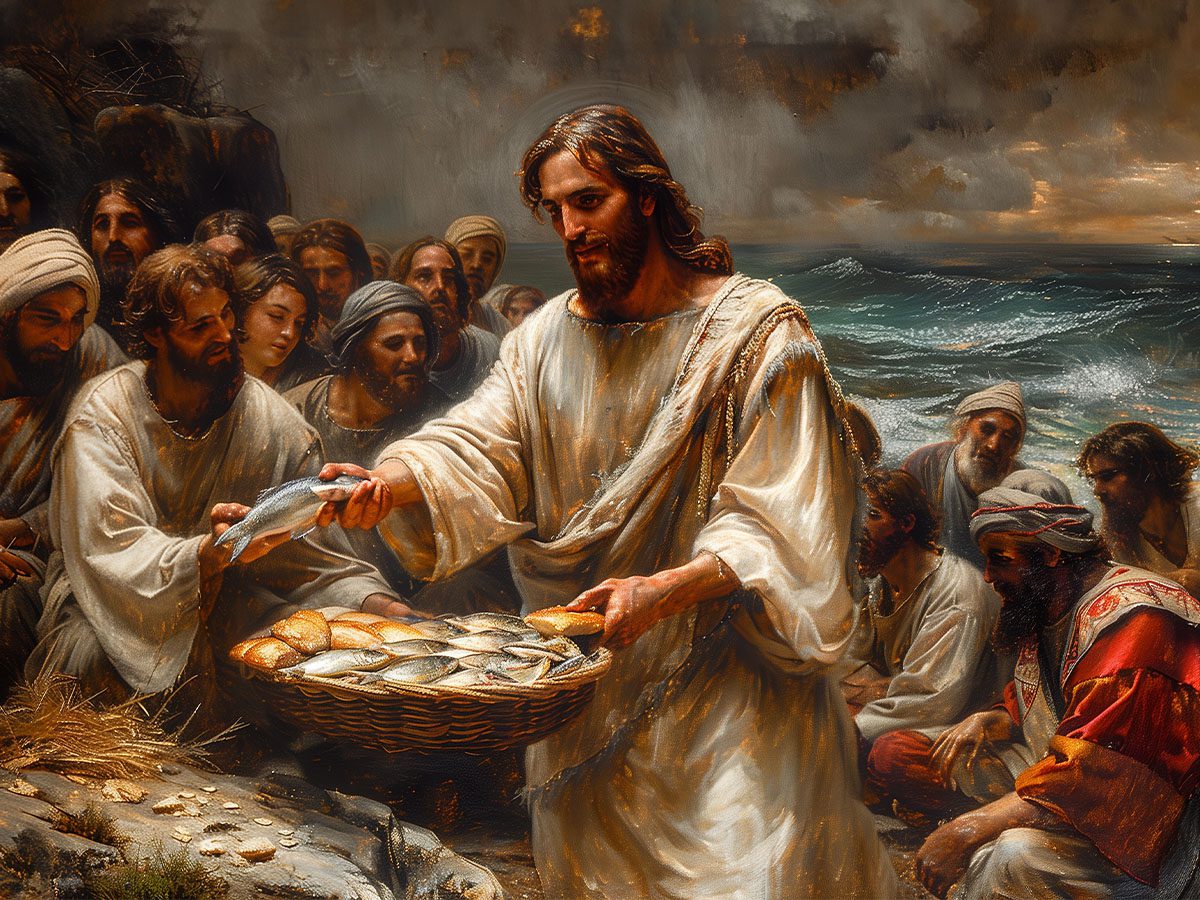
A new study is suggesting that two of Jesus’s biggest miracles involving fish could have been accomplished through scientific rather than divine means. The feeding of the 5,000, one of the few miraculous incidents recorded in all four Gospels of the New Testament, and the “miraculous catch of fish” both occurred along the Sea of Galilee, known as Lake Kinneret in modern-day Israel. According to researchers, there have been rare but multiple instances of high mortality amongst fish in Kinneret, caused by strong winds that triggered internal waves. Such waves brought lower-level oxygen levels closer to the surface of the water, effectively suffocating the fish and making it easier to catch them from the surface.
Such conditions could have permitted the “miraculous catch of fish” as described in Luke 5:1-11, as well as the similarly described event in John 21:1-14, which occurs after Jesus’s resurrection. According to Luke, Jesus instructs Simon Peter to cast out his net after an unfruitful night of fishing. When he does so, he ends up catching such a large number of fish that he needs to have two boats bring in their haul. It’s a pivotal event that brings Peter to his knees. In a later miracle, Jesus is preaching to a large group of listeners when he commands his followers to feed them. The crowd, consisting of 5,000 men, is then fed off two loaves and 5 fish in Matthew 14.
According to researchers like Dr. Tamar Zohary, mass fish mortality events have occurred in the 1990s and in 2007, 2012, and 2023. Yael Amitai, a physical limnologist from the Kinneret laboratory, explained the process. “The Sea of Galilee is a stratified lake. The upper layer is warm and oxygenated, while the lower layer is cold and lacks oxygen. When a strong westerly wind blows, it pushes the upper warmer layer of water from the lake’s west to the east, where it piles up, pressing on the existing water. In the west of the lake, water from the lower layer rises. In this way, fluctuations called internal waves are created in the water profile.”
According to study authors, the phenomenon “may explain the appearance of large numbers of easy-to-collect fish close to the shore described in the biblical narratives.” Similar events occur in Lake Erie and North Carolina’s Neuse River Estuary. Such an event could have been timed during the feeding of the 5,000, permitting Jesus’s disciples to collect enough to feed such a large group. Of course, the biblical narrative presents the moment of coming from a boy’s lunch that was gathered at the meeting and shared amongst the hungry crowd, not as his disciples going fishing.


